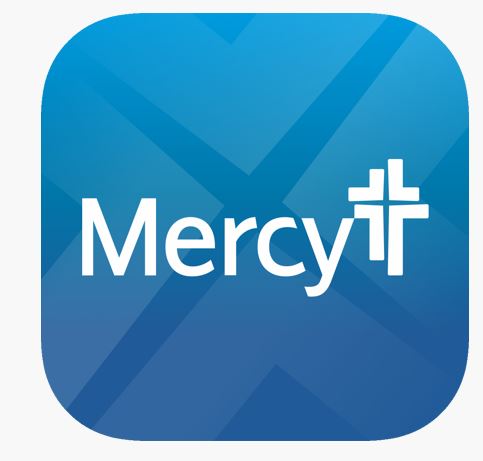Best Health Insurance Companies Of USA
Offering health insurance is a significant choice for employers, particularly daunting for small businesses lacking an HR team or benefits expert to guide them through the process.
Yet, investing the time and effort into establishing a structured health benefit plan is highly beneficial. There are numerous advantages to providing an employer-sponsored health insurance plan, such as aiding in the retention and recruitment of employees, distinguishing your business, and fostering a content and healthy workforce.
In this article, we will outline the top health insurance companies in the United States and provide alternative health benefit options for employers who seek alternatives to conventional group health insurance plans.

What Is Health Insurance?
Health insurance covers medical expenses if the treatment or medication is included in the policy. You pay a premium for this coverage, and the insurer covers at least some of your healthcare expenses.
Health insurance typically includes provider networks, consisting of medical professionals who take the healthcare plan. Certain plans mandate staying within the network for coverage, while others permit seeking care out-of-network. However, out-of-network care often incurs higher charges compared to in-network services.
The majority of Americans under pre-retirement age receive health insurance from their employers, although you have the option to obtain a plan via the ACA marketplace or straight from a health insurance provider.
What Does Health Insurance Cover?
Health insurance generally covers:
- Doctor visits.
- Prescription drugs.
- Hospital visits.
- Outpatient care.
- Labs and tests.
- Preventive coverage.
Not having health insurance can impact both your access to healthcare and your financial capability to afford it. Individuals without health insurance often postpone seeking care or forego it altogether, leading to exacerbated medical issues over time.
What Does Health Insurance Not Cover?
Here are some examples of what your health insurance may not cover:
- Cosmetic surgery.
- Out-of-network care.
- Fertility care.
- Some prescription drugs.
- Experimental treatments & drugs.

How Much Does Health Insurance Cost in USA?
Health insurance costs in the USA can vary greatly depending on several factors.
Important Factors Affecting Cost:
- Age: Premiums generally increase with age.
- Location: Costs can vary significantly by state and even zip code.
- Health status: Pre-existing conditions can affect your eligibility and cost.
- Plan type: Different plans offer varying levels of coverage and deductibles, impacting the premium.
- Employer coverage: If you get insurance through your employer, you’ll likely pay less than on the individual market, with your employer covering part of the cost.
Typically, health insurance in the USA is categorized into various levels: Bronze, Silver & Gold.
Here’s a breakdown of various plans for some major health insurance companies in the USA with their costing:
Bronze Plans: Average Monthly Health Insurance Costs
| Age | Aetna | Ambetter | Blue Cross Blue Shield | Cigna | Kaiser Permanente | Oscar | United Healthcare |
|---|---|---|---|---|---|---|---|
| 30 | $335 | $370 | $407 | $382 | $311 | $348 | $380 |
| 40 | $378 | $416 | $458 | $428 | $351 | $392 | $427 |
| 50 | $528 | $582 | $641 | $600 | $490 | $548 | $597 |
| 60 | $802 | $884 | $972 | $907 | $745 | $833 | $908 |
Silver Plans: Average Monthly Health Insurance Costs
| Age | Aetna | Ambetter | Blue Cross Blue Shield | Cigna | Kaiser Permanente | Oscar | United Healthcare |
|---|---|---|---|---|---|---|---|
| 30 | $424 | $441 | $543 | $454 | $423 | $451 | $489 |
| 40 | $451 | $497 | $611 | $510 | $476 | $508 | $551 |
| 50 | $667 | $694 | $854 | $714 | $665 | $709 | $770 |
| 60 | $1,013 | $1,055 | $1,296 | $1,078 | $1,011 | $1,078 | $1,170 |
Gold Plans: Average Monthly Health Insurance Costs
| Age | Aetna | Ambetter | Blue Cross Blue Shield | Cigna | Kaiser Permanente | Oscar | UnitedHealthcare |
|---|---|---|---|---|---|---|---|
| 30 | $413 | $493 | $599 | $578 | $435 | $482 | $551 |
| 40 | $534 | $555 | $674 | $648 | $490 | $543 | $620 |
| 50 | $747 | $776 | $942 | $908 | $685 | $759 | $867 |
| 60 | $1135 | $1179 | $1429 | $1372 | $1041 | $1153 | $1317 |
We didn’t provide average costs for platinum plans as they are fairly irregular. There aren’t sufficient platinum plans on the federal marketplace to calculate an accurate average across companies.
Bronze, Silver, Gold, And Platinum Health Insurance Plans
The ACA marketplace facilitates the comparison of health plan expenses using “metal tiers.” These tiers are determined by a plan’s premiums and cost-sharing, indicating the amount you may need to pay from your own pocket.
The metal tiers for health plans include bronze, silver, gold, and platinum. Individuals who anticipate using minimal healthcare services within a year might find bronze or silver plans advantageous. However, if you frequently visit a doctor and require numerous healthcare services, opting for a gold or platinum plan may be more suitable.
Out-of-Pocket Health Insurance Costs by Metal Tier
| Feature | Bronze | Silver | Gold | Platinum |
|---|---|---|---|---|
| Metal Tier | Bronze | Silver | Gold | Platinum |
| Insurance Company Pays | 60% | 70% | 80% | 90% |
| Member Pays | 40% | 30% | 20% | 10% |
| Premiums | Cheapest | Cheap | More expensive | Most expensive |
| Out-Of-Pocket Costs | Most | More than gold | More than platinum, but less than silver | Least |
Silver plans generally come with higher premiums compared to bronze plans, yet their reduced cost-sharing could render them more economical throughout the year. Subsidies based on your income may be available for silver plans.
For detailed research, visit the ACA exchange website at HealthCare.gov.
Health Insurance Complaints by Company
According to complaints submitted to state insurance departments, UnitedHealthcare exhibits a slightly superior complaint level compared to the average, while other major providers have complaint levels above average. The complaint ratios provided below indicate the number of complaints relative to the size of the company’s business.

What Are the Types of Health Insurance Plans?
Health insurance companies provide various types of benefit designs that influence factors such as your choice of healthcare provider, out-of-pocket costs, and the necessity for a referral to consult a specialist.
Here are the numerous common types of health insurance plans.
Preferred Provider Organization (PPO)
Preferred provider organization (PPO) plans provide the highest level of flexibility but usually entail higher premiums compared to other types of plans.
With a PPO, you can receive out-of-network care at a greater expense than in-network services. Additionally, you are not required to obtain a referral from a primary care provider to consult with specialists.
Health Maintenance Organization (HMO)
Health maintenance organization (HMO) plans typically offer lower costs compared to PPOs, but they come with more limitations.
You usually need to select a primary care provider who manages your healthcare, including arranging referrals for specialist visits. HMO members do not receive coverage from their plan for out-of-network care; the plan only covers in-network services.
Exclusive Provider Organization (EPO)
Exclusive provider organization (EPO) plans resemble HMOs and typically have comparable costs. They do not provide reimbursement for out-of-network care, thus it’s advisable to remain within your provider network.
Unlike HMOs, EPOs do not require a referral to consult with a specialist.
Point of Service (POS)
Point of service (POS) plans, the least prevalent health plan category, blend aspects of both HMOs and PPOs.
Similar to a PPO, a POS plan might include coverage for out-of-network care. However, you typically must designate a primary care provider, and obtaining a referral from them to see specialists, akin to HMO requirements, is usually necessary.
ACA Marketplace Costs by Plan Type
| Type Of Plan | HMO | EPO | PPO | POS |
| Average Monthly Cost For 30-Year-Old | $427 | $466 | $512 | $539 |
| Average Monthly Cost For 40-Year-Old | $480 | $524 | $576 | $607 |
| Average Monthly Cost For 50-Year-Old | $671 | $733 | $805 | $849 |
| Average Monthly Cost For 60-Year-Old | $1,017 | $1,109 | $1,224 | $1,290 |
Top 10 Healthcare Insurance Companies in the US
Knowing which health insurance companies are reputable and offer diverse products and medical providers is a solid starting point in your endeavor to offer excellent health benefit plans.
Below are the top 10 health insurance companies in the United States:
| Company | Founded Year | Members (Million) | Revenue (Billion) | Products Offered |
|---|---|---|---|---|
| UnitedHealth Group | 1977 | 49.5 | 201.1 | Health Care Services, Uniprise, Ingenix, Specialized Care Services |
| Anthem | 2014 | 22 | 90 | Blue Cross and Blue Shield |
| Kaiser Permanente | 1945 | 7 | 72.7 | Health insurance and medical care |
| Aetna | 1853 | 22 | 60.6 | Health insurance, vision, dental and other health plans |
| Cigna | 1792 | 9 | 41.6 | Health, Disability, Group, and Accident Insurance, Disability and Workers Life Compensation Case Management |
| Humana | 1961 | 14 | 53.7 | Health insurance |
| Centene Corporation | 1984 | 2 | 60.11 | State and National health solutions, enterprise solutions and international solutions |
| Molina Healthcare | 1980 | 4 | 19.8 | Health plans |
| Health Care Service Corporation (HCSC) | 1936 | 15 | N/A | Health plans, dental solutions, and group, life, and disability insurance |
| WellCare Health Plans | 1985 | 4 | 17 | Coverage through Medicare, Medicaid, and Medicare Prescription Drug health plans |
Ways to Get Health Insurance
The majority of pre-retirement Americans receive health insurance from their employer. If you’re under 26 years old, you have the option to obtain health insurance through your employer, your spouse’s plan, or your parent’s health plan.
From an Employer
Group health insurance provided by an employer is the primary method through which most Americans under pre-retirement age obtain health coverage. Employers commonly include health insurance as a component of their benefits package.
Group insurance coverage is generally more cost-effective compared to purchasing health insurance through alternative means, as employers commonly cover over half of the expenses.
Affordable Care Act Health Insurance Marketplace
The ACA health insurance marketplace, accessible via Healthcare.gov, provides health insurance options for individuals who are not eligible for employer-sponsored plans. While certain states have opted to manage their own exchanges on separate websites, you can locate the appropriate exchange for your state through Healthcare.gov.
The federal marketplace and state exchanges enable you to review available plans in your region. You can input details regarding your income and family. The marketplace website utilizes your income to provide cost estimates for each plan, factoring in subsidies and premium tax credits that lower ACA plan expenses.
Directly from a Health Insurance Company
You have the option to purchase an individual health insurance plan directly from an insurer, bypassing the federal marketplace website. These plans may mirror those available on the ACA exchange. However, if you choose this route, you will not receive the subsidies offered with ACA plans.
Health insurance companies have the option to offer plans that are not available on the ACA exchange and do not adhere to federal regulations. While you may find a less expensive plan directly from an insurer, it may not offer the same level of coverage as the plans available on the federal health insurance marketplace.
Medicare
Medicare is a federal health insurance program designed for senior citizens, individuals with certain disabilities, and those diagnosed with end-stage renal disease.
Medicare consists of several components, including Original Medicare (Parts A and B), Medicare Advantage (Part C), and Medicare Part D.
- Part A covers hospitalizations, skilled nursing facilities, and hospice care.
- Part B covers doctor services, preventive services, outpatient care, and medical supplies.
Individuals enrolled in Parts A and B have the option to purchase a Part D plan, offering prescription drug coverage.
Additionally, Medigap plans are available to help fill in the coverage gaps of Medicare.
Another option is Medicare Advantage, provided by private health insurance companies. Members of Medicare Advantage receive benefits equivalent to those in Parts A and B, typically including prescription drug coverage. Moreover, Medicare Advantage plans frequently offer additional benefits such as dental and vision care, as well as assistance with meal and transportation expenses.
Medicaid
Medicaid is a health insurance program for low-income individuals, jointly administered by the federal and state governments. Eligibility criteria differ from state to state. Costs under Medicaid are determined by an individual’s income, with eligible individuals often paying minimal to no fees for comprehensive health insurance coverage.
The Children’s Health Insurance Program (CHIP) is a federal/state initiative aimed at providing health insurance coverage for pregnant women and children. While some states integrate Medicaid with CHIP, others maintain them as distinct programs.
Short-Term Health Insurance
Short-term health insurance provides restricted coverage at relatively low prices in the majority of states. However, some states prohibit the sale of short-term health insurance plans, and critics argue that these plans do not offer adequate coverage.
Short-term health insurance plans are designed to serve as temporary solutions to fill gaps between other health insurance plans. For example, if you find yourself between jobs, a short-term plan could offer a cost-effective option.
In many states, insurance companies are permitted to offer short-term health plans for up to a year, with members having the opportunity to renew their policies twice. However, certain states impose restrictions on short-term health insurance plans, limiting their duration to shorter periods.
A downside to short-term health insurance is its limited coverage compared to standard health insurance. It can be challenging to find a short-term plan that includes maternity care, prescription drugs, and mental health services.
Catastrophic Health Insurance
Catastrophic health insurance is exclusively accessible to individuals under the age of 30 or those experiencing significant financial hardships, such as homelessness.
Catastrophic health plans, available via the ACA marketplace, feature affordable premiums but entail high out-of-pocket expenses when accessing care. Unlike short-term health plans, which offer restricted benefits, catastrophic health insurance provides the same level of coverage as an ACA plan.
How to Choose the Best Health Insurance for You
The perfect health insurance plan for you depends on following factors:
- Your eligibility for a plan
- Costs
- Benefit design
- Prescription drug coverage
- Size and location of provider network
If you qualify for a health plan offered by your employer, your spouse’s job, or a parent’s job, it’s typically the most economical route to obtain comprehensive coverage. If that isn’t available to you, purchasing an ACA plan through the marketplace or exploring one of the alternative options mentioned earlier are viable alternatives.
Here are the steps to compare plans and discover the optimal health insurance option:
- examine costs, including premium, deductible, and out-of-pocket maximum. Certain plans, such as HMOs, offer lower premiums but have more limitations. Conversely, a PPO typically entails higher costs but provides flexibility for out-of-network care.
- Look at the deductible vs. premium. Those expecting few medical expenses may prefer low-premium, high-deductible plans, while frequent doctor visitors may benefit from higher premiums with lower out-of-pocket costs.
- Compare plan type. Explore the details of different benefit design types, considering the advantages and disadvantages of PPOs, HMOs, EPOs, and any additional plans available.
- Check the provider network to ensure that your doctors & preferred facilities are within the network of the plans you’re evaluating. If they are out-of-network, you may receive no coverage for their services, depending on the plan.
- If you have prescriptions, check with your insurance provider to confirm that they are covered and determine the out-of-pocket expenses you would incur.
- Check for extra benefits.
After completing these steps, you can be more assured in selecting the most suitable health insurance plan.
Conclusion
With so many health insurance companies and plan varieties available, employers should also explore alternative and adaptable health benefit options. HRAs and health stipends provide a straightforward approach to introducing additional benefits without the complexities of managing group plans. Additionally, they empower employees to select the plan that best suits their needs.
If you’re an employer contemplating implementing an HRA or stipend program within your organization, we’re here to assist you in getting started.
FAQs about best health insurance companies in USA
What is the most widely accepted health insurance in the US?
Kaiser Permanente is the best health insurance company in the USA.
Does the U.S. have the best quality healthcare?
Even with increased healthcare expenditure, the health outcomes in America are not superior to those in other developed nations.
Do most Americans have private health insurance?
Yes, over two-thirds of Americans receive their health insurance coverage from private insurers.
Is healthcare free in the USA?
Universal healthcare is not available. The U.S. government does not offer health benefits to citizens or visitors.
What country has 100% free healthcare?
Brazil is the only country in the world that offers free healthcare for all its citizens.






